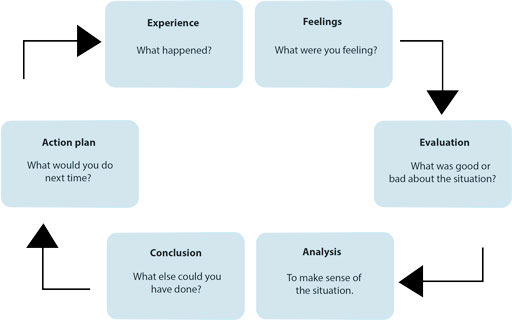6.2 Gibb’s reflective cycle
Alternatively, other theorists have broken down the cycle into further stages, an example of which is Gibb’s reflective cycle, see Figure 4.
Gibb’s model acknowledges that your personal feelings influence the situation and how you have begun to reflect on it. It builds on Boud’s model by breaking down reflection into evaluation of the events and analysis and there is a clear link between the learning that has happened from the experience and future practice.
However, despite the further break down, it can be argued that this model could still result in fairly superficial reflection as it doesn’t refer to critical thinking / analysis or reflection. It doesn’t take into consideration assumptions that you may hold about the experience, the need to look objectively at different perspectives, and there doesn’t seem to be an explicit suggestion that the learning will result in a change of assumptions, perspectives or practice. You could legitimately respond to the question ‘What would you do next time?’ by answering that you would do the same, but does that constitute deep level reflection?

